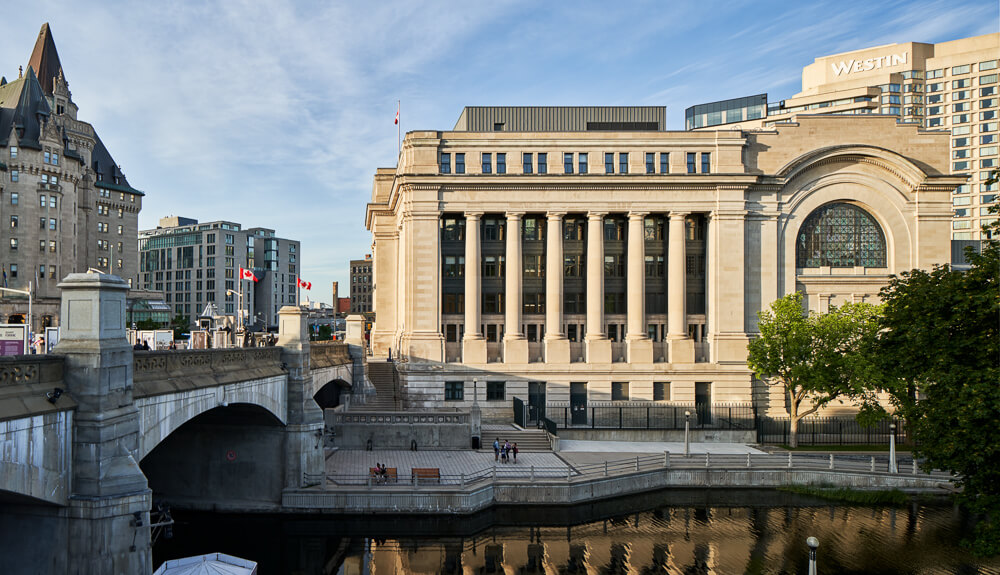
In the capital of Canada, a city known for its landmark stone architecture, two buildings stand out for their artful facades which have endured and evolved with the generations, in spite of the ever-changing landscape of politics.
The history and architecture of what is now the Senate of Canada Building is fascinating. The building, close to Parliament Hill in downtown Ottawa, was built between 1909 and 1912 as the capital’s Union Station building (it was originally known as Grand Trunk Central Station), remaining in that function until 1966. It was also built at a time when railway stations were like cathedrals, signifying the technological, and social importance of the railroad.
The Senate of Canada Building
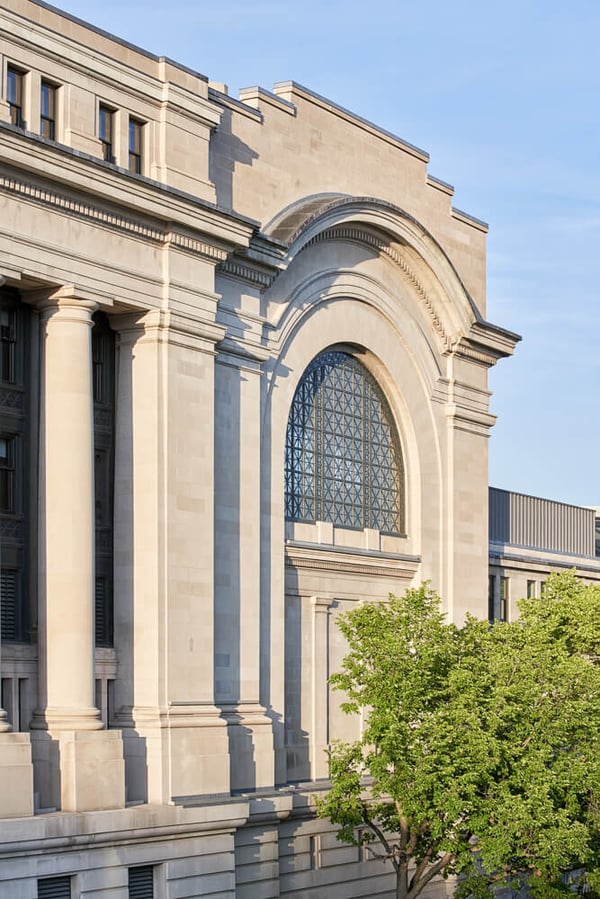
Its design, by the Montreal-based architecture firm Ross & MacFarlane, is Beaux-Arts, a favorite aesthetic choice for railway station architecture in the time. But this one goes several steps further: Its Great Hall is a ¾ scale rendition of the Great Hall of the Roman Baths of Caracalla. It elegant barrel-vaulted ceiling, patterned with decorative coffers is an example of its monumental style. Indeed, the building was built according to the ideals of the City Beautiful urban planning movement, the North American architecture and urban planning philosophy of the turn of the 20th century, whose aim was the beautification of cities and the introduction of monumental grandeur to urban environments. The exterior is carefully-dressed in smooth, rich INDIANA LIMESTONE - STANDARD BUFFTM.
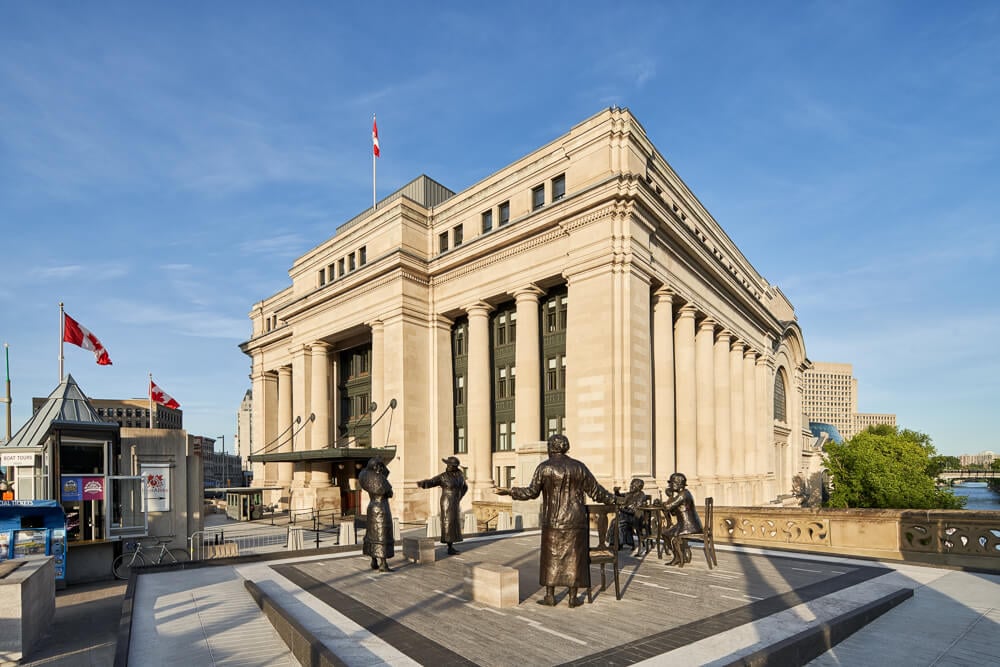
But as railway travel gave way to the jet age, the station was no longer used the same way. For a short while there was talk of demolishing, an idea that set the public up in arms. In the mid-1960s, a project was green lit to turn the former grand station into the Government Conference Center. In 1968, the transformation began and work was completed in 1973. Union Station was classified as a Federal Heritage Building in 1989, noted for its history and architectural value
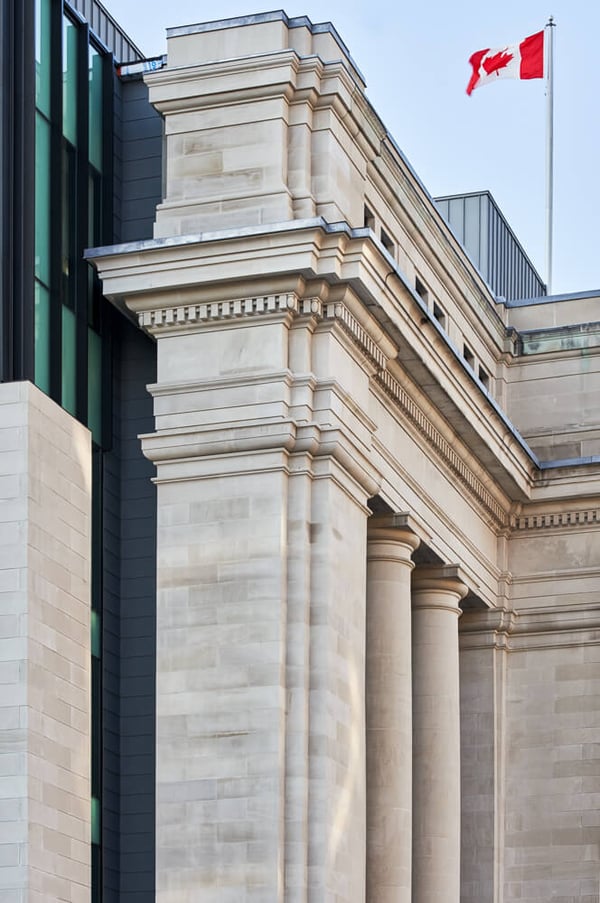
In December 2018, the GCC took another identity: it was renamed the Senate of Canada Building. After a six-year overhaul that began in 2010, this landmark of the Beaux-Arts style was restored to its original condition while its inner workings received modern updates that focused on reduced energy consumption.
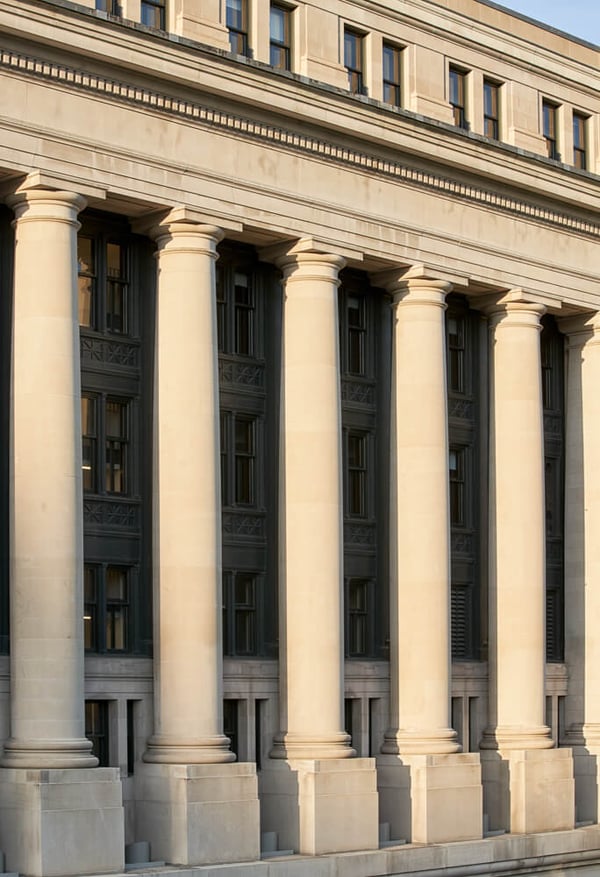
Two different fabricators worked on the newly named Senate of Canada building. Smith and Barber did work on existing limestone and RJW–Gem Campbell Stonemasons Inc. completed the new stone work for the addition. The Canadian Senate began occupying the space at the beginning of 2019.
Traveling to Ottawa? Try this historic hotel clad in Indiana Limestone.
The 180 Wellington Building
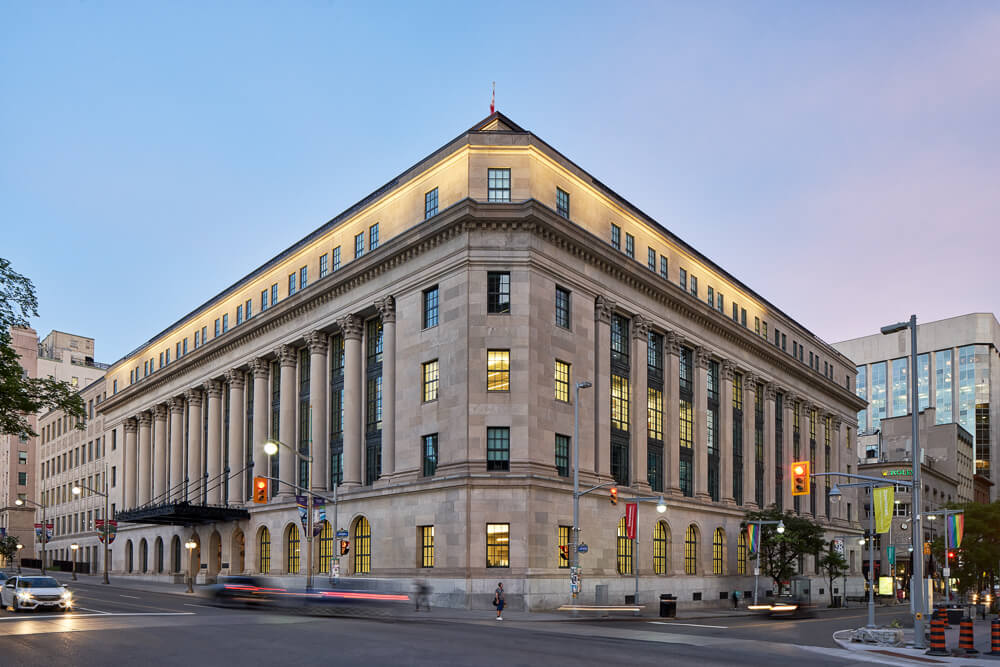
About a 15-minute walk from the Senate of Canada Building is another Ottawa landmark covered in INDIANA LIMESTONE-FULL COLOR BLENDTM: The 180 Wellington Building. Like Union Station, the building has served various roles. It dates back to 1927 when it was the headquarters of the Metropolitan Life Insurance Company. It was designed by American architect D. Everett Waid and Ottawa-based J.A. Wart, also in the Beaux Arts style. Its own incredible design features include three-story Corinthian columns, a cast steel and glass canopy entrance, marble floors and walls and a coffered beam ceiling accented by cast plaster detailing.
Indiana Limestone is a popular building material for the harsh Canadian climate.
Download the Spec Sheet Catalog for all the details.
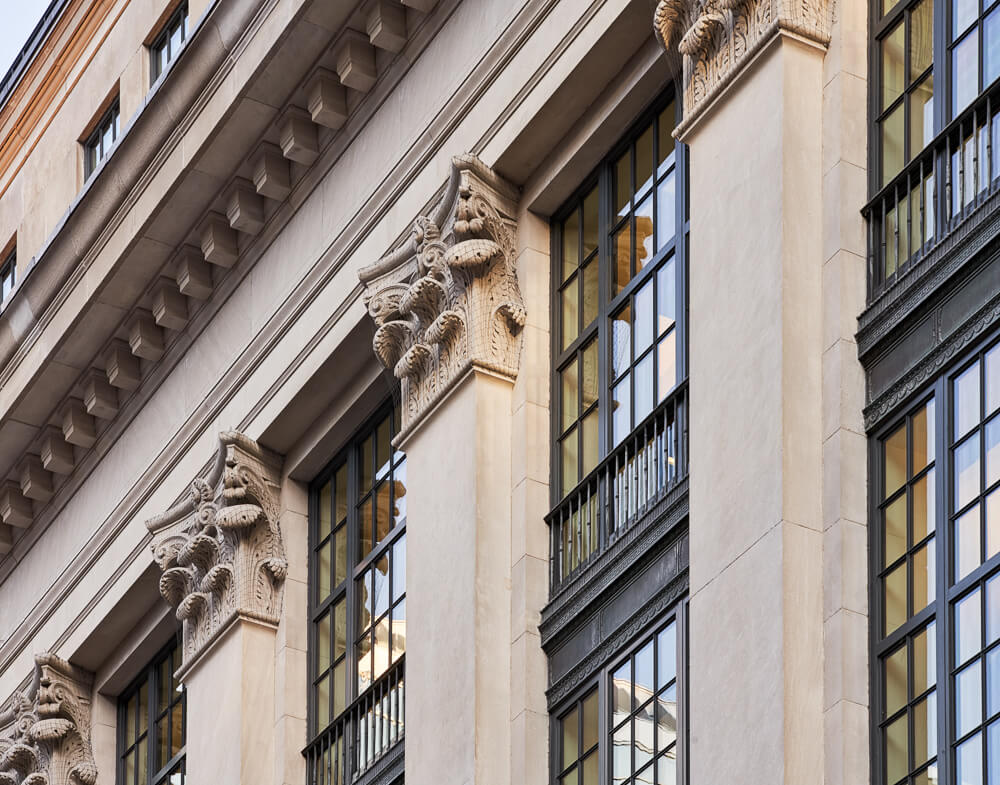
A landmark feature is the million piece ceiling mosaic by American muralist Barry Faulkner, considered one of the finest designs of the era. The building design also demonstrated a visionary attitude to efficient office layout and concern for workplace well-being. At one early point in its history, it even had a tennis court on the roof for employees of the insurance company. The use of quality Indian limestone on the exterior, is in keeping with the beauty of the building.
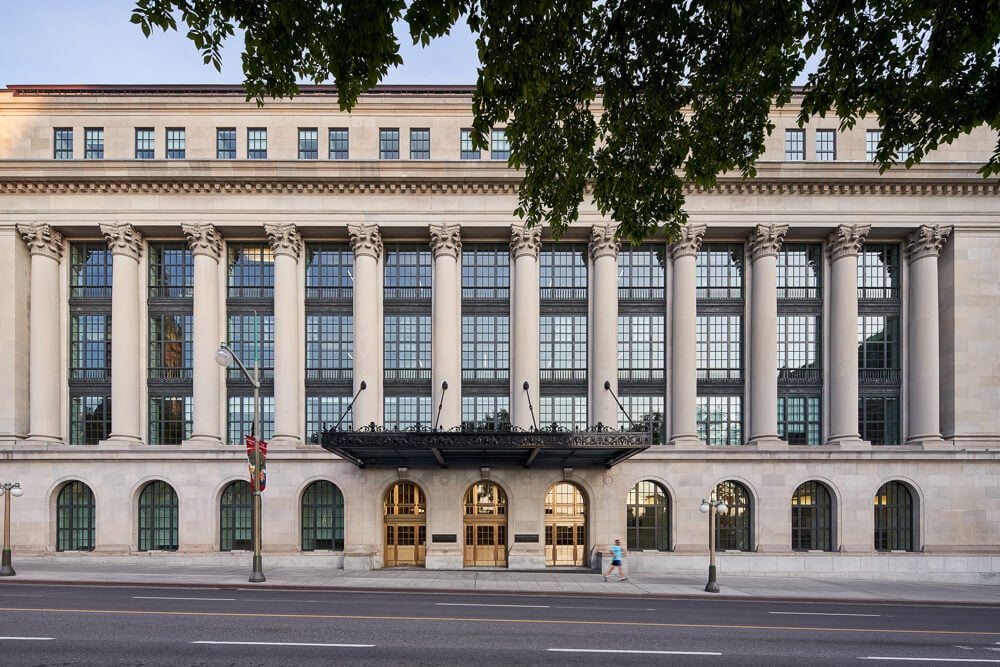
In 2010, the government of Canada bought the building and re-opened it in 2016 after a $425 million restoration. Today it houses the offices of 70 members of parliament. The renovation included work on exterior elements such as doors and windows, in addition to the limestone façade. It’s noteworthy that 97 percent of the demolished material was recycled or repurposed; the building is now Green Globes certified and is more energy efficient by 25 percent. It’s a testament to the workability, timelessness and beauty of limestone.
The impressive renovations of these two iconic Ottawa buildings have been the (non-political) talk of the town. The renovations capture the celebrated structures’ former glory while allowing them to live on in new lives.
Begin your search for a building material with a catalog of iconic Indiana Limestone.
